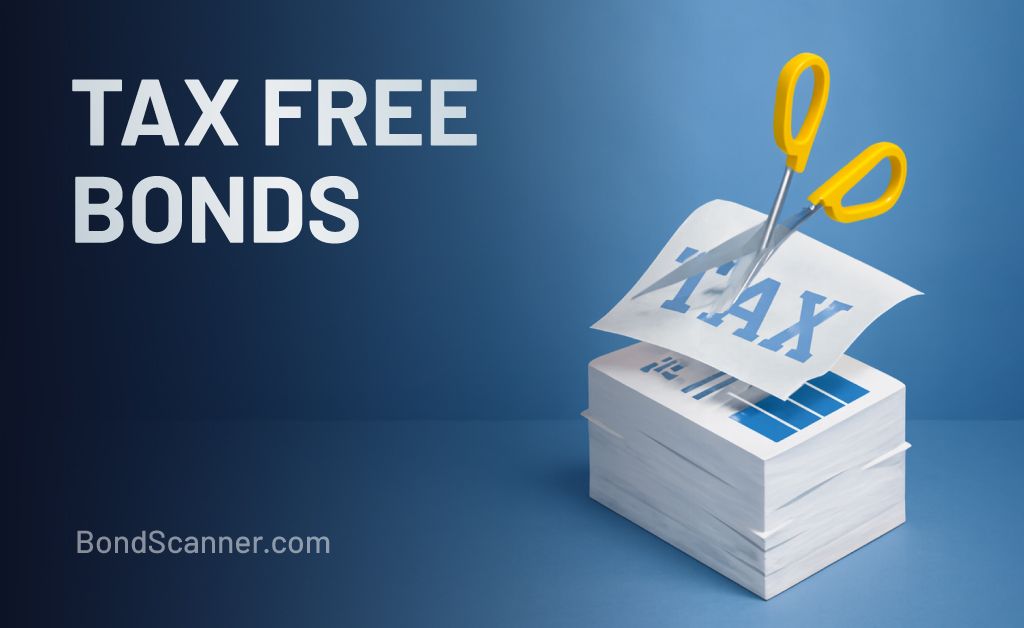Tax-Free Bonds in India: A Complete Guide (2025 Edition)
30 October 2025

What Are Tax-Free Bonds?
In the Indian fixed-income landscape, tax-free bonds hold a special place for investors who prefer stability and predictable income without worrying about taxes on interest earnings. These bonds are typically issued by government-backed institutions such as the National Highways Authority of India (NHAI), Power Finance Corporation (PFC), and Indian Railways Finance Corporation (IRFC), offering investors both security and tax efficiency.
As we enter 2025, understanding how tax-free bonds work, who can invest in them, and their benefits can help investors make more informed decisions.
Tax-free bonds are long-term debt instruments issued by government-backed entities to raise funds for infrastructure and public projects. The key feature that sets them apart from other bonds is that the interest earned is completely exempt from income tax under Section 10(15)(iv)(h) of the Income Tax Act, 1961.
These bonds are suitable for investors looking for:
Stable returns over a long period (typically 10–20 years)
Minimal default risk (due to government backing)
Tax-efficient income, especially for those in higher tax brackets
Example:
If an investor buys NHAI tax-free bonds offering a 7% coupon, the annual interest is not added to their taxable income — unlike most other interest-bearing investments.
Key Features of Tax-Free Bonds
| Feature | Details |
|---|---|
| Issuer | Government-backed institutions like NHAI, PFC, REC, HUDCO, and IRFC |
| Tenure | Generally 10 to 20 years |
| Interest Rate (Coupon) | Around 6%–7.5% per annum (varies by issue year) |
| Tax Treatment | Interest income is tax-exempt; capital gains are taxable |
| Listing | Available on stock exchanges (NSE/BSE) for secondary market trading |
| Risk Level | Low (due to sovereign or quasi-sovereign backing) |
| Lock-in Period | No lock-in; investors can sell in the secondary market |
How Do Tax-Free Bonds Work?
When you invest in a tax-free bond, you lend money to a government-backed issuer for a fixed tenure. In return, the issuer pays you annual or semi-annual interest (coupon) and repays the principal amount upon maturity.
Example (Illustration Only):
Suppose you invest ₹10,00,000 in a 7% NHAI tax-free bond for 10 years:
Annual interest: ₹70,000 (tax-free)
Maturity amount: ₹10,00,000 (returned after 10 years)
Here, the effective post-tax return may be higher than a taxable fixed deposit, especially for investors in higher tax brackets.
Benefits of Investing in Tax-Free Bonds
1. Tax-Exempt Interest Income
The primary advantage is that the interest earned is fully exempt from income tax, making it attractive for investors seeking post-tax efficiency.
2. Safety and Security
Issued by public sector undertakings and backed by the Government of India, these bonds carry low default risk compared to corporate or private bonds.
3. Fixed and Predictable Returns
Investors enjoy stable, pre-determined coupon payments, ideal for retirees or conservative investors.
4. Tradability on Stock Exchanges
Even though these are long-term instruments, they can be bought or sold on stock exchanges like NSE or BSE, providing liquidity if needed.
5. Ideal for Long-Term Planning
The 10–20 year tenure aligns well with long-term financial goals such as retirement income or education funding.
Who Should Consider Tax-Free Bonds?
Tax-free bonds are well-suited for:
Investors in higher income tax brackets (30% or above)
Retirees looking for stable, tax-efficient income
Conservative investors preferring safety over high returns
Those with long-term investment horizons
Major Issuers of Tax-Free Bonds in India
Some of the leading government-backed issuers include:
National Highways Authority of India (NHAI)
Power Finance Corporation (PFC)
Rural Electrification Corporation (REC)
Housing and Urban Development Corporation (HUDCO)
Indian Railways Finance Corporation (IRFC)
Tax Implications of Tax-Free Bonds
While the interest income is tax-free, capital gains from the sale of bonds are taxable:
Short-term capital gains (STCG): If sold within 12 months, taxed as per applicable income slab.
Long-term capital gains (LTCG): If held for more than 12 months, taxed at 10% without indexation.
Risks to Consider
Even though tax-free bonds are considered safe, investors should be aware of certain risks:
Interest Rate Risk – Bond prices fall if market interest rates rise.
Liquidity Risk – Limited trading volumes can make it harder to sell quickly.
Reinvestment Risk – Coupons received may have to be reinvested at lower rates.
Inflation Risk – Fixed coupon income may lose purchasing power during high inflation periods.
FAQs on Tax-Free Bonds
1. Are tax-free bonds still available for investment in 2025?
Currently, there are limited new issuances. However, investors can buy existing listed tax-free bonds through the secondary market.
2. Is the interest from tax-free bonds completely exempt from tax?
Yes, interest earned is fully exempt under Section 10(15)(iv)(h) of the Income Tax Act, 1961.
3. How are capital gains on tax-free bonds taxed?
Capital gains from selling bonds before maturity are taxable, depending on the holding period.
4. Can NRIs invest in tax-free bonds?
Most issues historically allowed NRI participation, but it depends on the specific bond’s offer document.
5. What is the minimum investment amount?
The minimum investment typically starts from ₹1,000 per bond (subject to issuer terms).
Disclaimer
This blog is intended solely for educational and informational purposes. The bonds and securities mentioned herein are illustrative examples and should not be construed as investment advice or personal recommendations. BondScanner, as a SEBI-registered Online Bond Platform Provider (OBPP), does not provide personalized investment advice through this content.
Readers are advised to independently evaluate investment options and seek professional guidance before making financial decisions. Investments in bonds and other securities are subject to market risks, including the possible loss of principal. Please read all offer documents and risk disclosures carefully before investing.
Recent Blogs

Covered Bonds & Senior Secured Bonds Explained
An educational guide explaining covered bonds, senior secured bonds, what secured bonds mean, and how these instruments function in India’s bond market.
19 Dec 2025

Guide to Capital Gain Bonds (54EC) & Alternatives
An educational guide explaining capital gain bonds under Section 54EC, issuer options like PFC and SBI, eligibility rules, and alternatives for reinvesting sale proceeds.
19 Dec 2025

Bond ETFs in India: How They Work & When to Use Them
An educational guide explaining bond ETFs in India, their structure, returns, risks, and how products like Bharat Bond ETF and corporate bond ETFs function.
19 Dec 2025